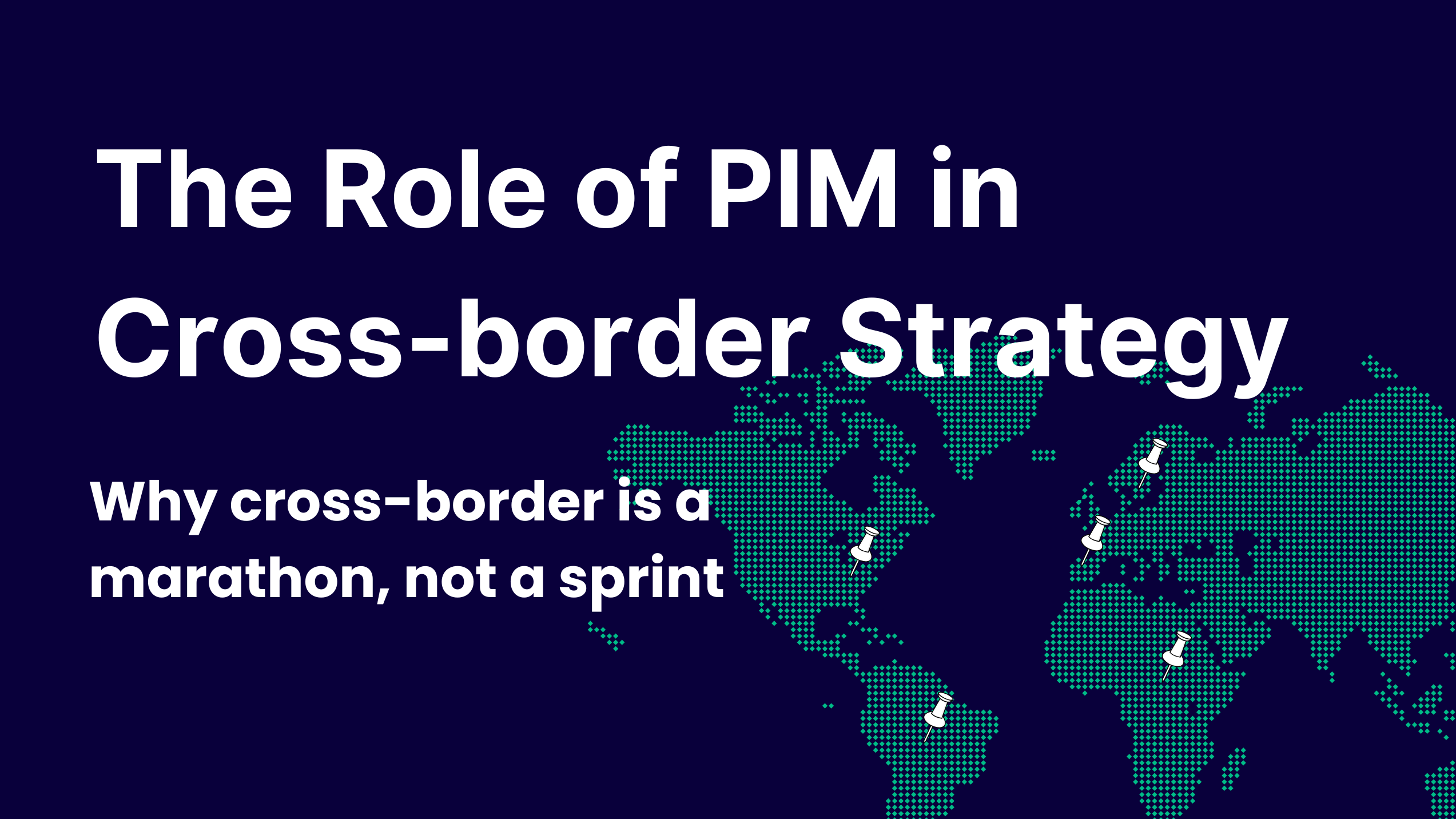International sales are no longer reserved for the largest players. More and more Polish e-commerce companies are expanding beyond domestic borders - sometimes in full B2C mode, sometimes B2B, and sometimes in a hybrid model.
This is visible in the recent studies regarding the Polish market.
Data shows an interesting trend: according to Fulfilio’s Spring 2025 Report, around 46% of Polish online stores sell abroad. Meanwhile, the DHL eCommerce “Trends 2025 Business Edit” survey raises the bar - 61% of companies generate at least part of their revenue from foreign markets.
Despite international activity, the domestic market remains the primary pillar for most businesses. Many exporters report that foreign sales account for up to 25% of their revenue, with only a few brands achieving half or the majority of their sales abroad.
On the other hand, data shows that 43% of Polish online stores still do not sell internationally, even though 50% plan to expand abroad.
What do these numbers tell us?
- Cross-border sales are already becoming standard for an increasing part of the market, but for many, it’s still just the beginning.
- A significant portion of companies still hesitate to expand.
- For many, international expansion is an “unknown project”: they don’t know where to start, how to organize processes, which tools to implement, or how to scale operations in new conditions.
When it comes to the challenges, brands often mention lack of market knowledge, logistics and associated costs, and compliance with local regulations. However, underlying all these challenges is another, less visible one: the organization of product data.
In this article, we’ll explain why structured and automated product data is one of the key factors determining the success of international sales campaigns.
The e-commerce localization process - step by step
The truth is that a strategy for cross-border sales is not just about translating a website and adding a few currencies. It’s a project that requires careful planning of processes, teams, and data across the organization.
Any company aiming to sell effectively abroad faces multiple tasks across departments:
- Product data and catalogs – centralizing information about products, attributes, variants, prices, units of measure, certifications, and assets. These data points determine sales effectiveness, brand credibility, and speed of launching products in new markets.
- Marketing and local content – creating descriptions, graphics, images, and promotional materials tailored to local culture, language, and legal requirements. Different markets require different formats and communication styles, and mistakes in this area immediately affect conversion rates.
- E-commerce systems and integrations – adapting platforms to local marketplaces, currencies, payment methods, and taxes. This requires seamless synchronization between ERP, PIM, CMS, and sales channels. Additionally, many countries have unique sales channels that need to be addressed.
- Logistics and fulfillment – selecting warehouse partners, shipping providers, and returns processes, optimizing supply chains, and adapting packaging to local requirements.
- Customer service and local regulations – providing support in local languages, complying with return policies and consumer rights, and obtaining necessary certifications.
Why product data is central to the process
While there are other tasks unrelated to the product itself (like building distributor networks, conducting market research, or hiring local teams), the right way to manage product data remains an essential aspect. Every area requires collaboration across departments and well-defined processes.
Without centralized product data management and a clear strategy, companies risk duplicated work, inconsistent communication, and delays in product launches.
To put it simply - product data is not just “information in Excel.”
It’s the fuel of the cross-border process. It determines whether your store and products:
- look professional and inspire trust,
- comply with local marketplace requirements,
- reach customers consistently and efficiently.
And what is, unfortunately, the common approach to cross-border?
The “as fast as possible” strategy
When companies expand internationally, they often start with what’s visible: translating the website, converting currencies, and preparing ad campaigns.
These initial actions show that expansion is “underway.” However, this is also when problems start.
At first, everything moves quickly. The company wants to “be on the market” as soon as possible.
Shortcuts are taken: only part of the offer is translated, simplified descriptions are uploaded, and the assumption is “we’ll fix it later.”
Later rarely comes.
Behind the scenes, chaos grows: product descriptions differ between languages, images are misplaced, prices are not synchronized with ERP, and marketplaces reject files due to incompatible formats. Teams begin to work in a “patchwork” mode - instead of operating in well-established processes, they fix problems on the go.
From the outside, it looks like a fast-growing store - internally, it’s a jigsaw puzzle with pieces from different sets.
Often, this is due to the lack of a single source of truth for products.

In many companies, data lives in multiple places - Excel files, ERPs, CMSs, marketing folders. Each department has its own version.
The product manager updates a description in one system, the e-commerce manager adjusts a name in another, and marketing produces new translations without knowing the specification has changed. Temporary spreadsheets may help, but in the long run, they deepen the chaos.
It’s like trying to build a global store from parts scattered across five warehouses - everything exists, but you don’t know what’s current, who owns what, or how to combine it into a single, coherent whole.
As Marlena Żurawska-Szuter highlighted in her presentation on implementing PIM at AB Bechcicki, these challenges become even more apparent at scale [video available with English subtitles].
If we dig deeper, we’ll see that each industry has its own challenges:
- Fashion: sizing, colors, culturally adapted descriptions
- Electronics: technical parameters, units, compatibility, certifications
- Beauty & health: ingredient labels and translations compliant with local laws
- Home & garden: varying dimension standards, material names, quality norms
- B2B: product sheets, technical specifications, multilingual PDFs
- Construction: outdated catalog management, inconsistent data, unique product attributes
This brings us to a key question: how can chaos be turned into a system that truly supports global sales? The answer lies in tools that enable order - such as PIM.
How PIM enables cross-border execution
PIM provides consistent product data. This data determines:
- marketplace visibility,
- brand trust,
- advertising efficiency,
- speed of market expansion.
With PIM, every product detail comes from a single source.
The product team manages attributes, marketing creates descriptions, and translators work in the same environment - all on the same data, without overwriting each other’s work.
Changes to names or images automatically update wherever the product is published. AI functionality, bulk actions, and attribute extraction from PDFs can further accelerate workflows. Complete product cards can be created largely automatically - as shown in the video below:
This is especially critical for international expansion, where content consistency and localization are key success factors.
Furthermore, PIM allows you to easily create multilingual product versions, adapt units, currencies, and industry terminology for each market - without tedious copying between spreadsheets or CMS systems.
PIM not only organizes data but also processes. Each product has a lifecycle: from creation and enrichment, through translation, to publication and updates. In Ergonode, this workflow can mirror the real operations of your team - reducing errors, increasing control, and speeding up product launches for new markets.
PIM becomes the foundation for scaling - allowing companies to focus on growth instead of firefighting. Expansion stops being a series of ad-hoc actions and becomes a repeatable, predictable process.
Where there was once version chaos and file confusion, there’s now a clear information flow - and that’s what builds competitive advantage.
From chaos to scale - leveraging cross-border potential with Ergonode
As mentioned at the start, international expansion is no longer reserved for the largest players. More and more Polish companies - including mid-sized and niche brands - are discovering the international potential of their products.
Each new market increases complexity: more languages, specifications, currencies, images, and descriptions. This is exactly where a well-designed PIM system makes a difference.
Ergonode was created to simplify product content management across multiple channels and languages - enabling companies to scale sales faster.
From a single platform, you can:
- manage the full product data structure,
- create localized and translated content variants,
- distribute product information to any channel (e-commerce, marketplaces, B2B, print catalogs),
- monitor data quality and completeness before it reaches the customer.
Your teams work in a shared environment, while you maintain control over consistent offerings - regardless of the number of markets or sales channels.
Companies implementing PIM often describe this as “regaining order” - not just in data, but across the entire product communication process.







